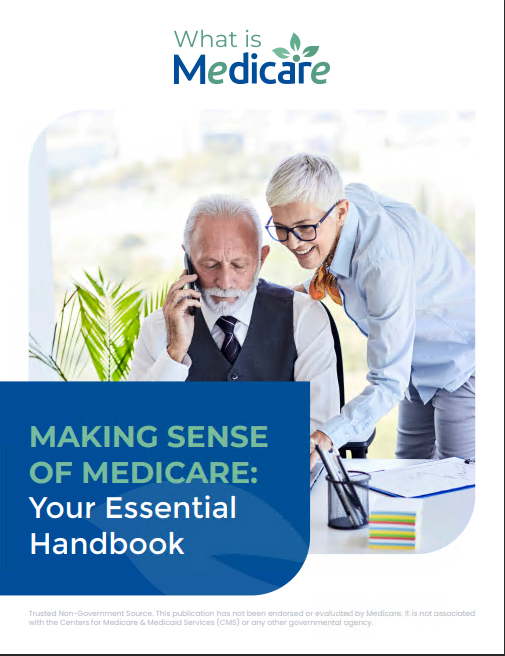Key Takeaways
-
Medicare Part A and Part B costs are increasing in 2025, impacting premiums, deductibles, and out-of-pocket expenses. Budget planning is essential.
-
Understanding these changes can help you maximize your benefits and avoid unexpected healthcare expenses.
Preparing for Medicare Cost Changes in 2025
If you’re a Medicare beneficiary or planning to enroll soon, 2025 brings several cost updates you need to consider. Knowing how Medicare Part A and Part B costs will change can help you budget wisely and avoid surprises when accessing healthcare services. Let’s break it all down in detail to help you stay ahead.
Medicare Part A: Hospital Insurance
Part A primarily covers inpatient hospital care, skilled nursing facility stays, hospice, and some home health services. While many people qualify for premium-free Part A, others pay a monthly premium based on their work history. Let’s take a closer look at the associated costs and how they’ve been adjusted for 2025.
Premiums for 2025
-
Premium-Free: If you or your spouse worked and paid Medicare taxes for at least 40 quarters (10 years), you’ll likely qualify for premium-free Part A.
-
Monthly Premiums: If you have fewer than 40 quarters of Medicare-covered employment, premiums in 2025 will be $518 per month for fewer than 30 quarters and $284 per month for 30-39 quarters. This is a notable increase, so planning ahead is crucial if you’re in this category.
Deductibles and Coinsurance
In 2025, Part A deductibles and coinsurance amounts are increasing:
-
Inpatient Hospital Deductible: $1,676 per benefit period. This amount applies before Medicare covers your hospital stay, which makes it an essential component of your healthcare budget.
-
Coinsurance:
-
Days 1-60: $0 (covered fully after the deductible).
-
Days 61-90: $419 per day.
-
Lifetime Reserve Days: $838 per day (up to 60 days over your lifetime).
-
-
Skilled Nursing Facility (SNF) Coinsurance: $209.50 per day for days 21-100. This is another cost that can accumulate quickly if extended care is required.
Medicare Part B: Medical Insurance
Part B covers outpatient care, doctor visits, preventive services, and some home health services. This essential component of Medicare comes with its own set of costs, and 2025 brings several increases you need to plan for.
Standard Premiums
For 2025, the standard Part B monthly premium is increasing to $185. Higher-income beneficiaries will pay more based on income-related monthly adjustment amounts (IRMAA). If your income exceeds certain thresholds, these adjusted premiums can significantly affect your healthcare budget.
Annual Deductible
The Part B deductible is also increasing to $257 in 2025. You’ll need to meet this amount before Medicare begins covering its share of your Part B expenses. This is an annual cost, so ensure it’s accounted for in your financial planning.
Coinsurance and Cost Sharing
After meeting the deductible, you typically pay 20% of the Medicare-approved amount for most services covered by Part B. This includes:
-
Doctor visits.
-
Outpatient medical services.
-
Durable medical equipment (DME).
These costs can vary depending on the frequency and type of care you require, making it critical to monitor your healthcare needs.
Budgeting for Out-of-Pocket Costs
Understanding your out-of-pocket responsibilities under Medicare Part A and Part B is crucial for effective budgeting. While Medicare covers a significant portion of your healthcare costs, you’ll still be responsible for premiums, deductibles, and coinsurance. Let’s explore some practical ways to manage these expenses.
Track Deductibles
Both Part A and Part B have separate deductibles. Keep these amounts in mind when estimating your yearly healthcare budget:
-
Part A inpatient deductible: $1,676 per benefit period.
-
Part B deductible: $257 annually.
Tracking when you’ve met these deductibles can help you plan for when Medicare starts covering additional costs.
Plan for Coinsurance Costs
Coinsurance can add up quickly, especially for extended hospital stays or frequent outpatient visits. Budgeting for these expenses in advance can prevent financial strain during the year. For example, knowing that you may owe $419 per day for hospital stays beyond 60 days can help you allocate resources effectively.
Consider Supplemental Coverage
If you anticipate high out-of-pocket costs, explore options for additional coverage, such as Medicare Supplement (Medigap) plans, which can cover many coinsurance and deductible expenses. While these plans come with their own premiums, they can save money in the long run for those with extensive healthcare needs.
Key Timelines to Remember
Benefit Periods for Part A
Medicare Part A operates on a benefit period system:
-
A benefit period begins the day you’re admitted as an inpatient and ends after 60 consecutive days without hospital or skilled nursing facility care.
-
If you’re admitted again after 60 days, a new benefit period starts, and you’ll owe the full Part A deductible again.
Understanding how benefit periods work can help you avoid unexpected costs if you require multiple hospital stays within a short timeframe.
Annual Deductibles for Part B
Part B resets its deductible every calendar year. Once you meet the deductible for the year, you only pay coinsurance for covered services. This reset is an essential aspect of your annual financial planning.
Maximizing Your Medicare Benefits
Medicare’s cost increases don’t have to break your budget. Here are a few strategies to make the most of your coverage while keeping costs manageable:
Preventive Services
Take advantage of Medicare’s preventive services, many of which are covered at no additional cost to you. These include:
-
Screenings for conditions like diabetes and heart disease.
-
Vaccinations.
Staying proactive with preventive care can help you avoid more costly treatments down the line.
Medicare and Secondary Insurance
If you have additional insurance, such as retiree coverage or a Medicare Supplement plan, it can help cover some of your out-of-pocket costs. Understanding how these plans work with Medicare is crucial for minimizing expenses. For instance, some plans cover the Part B deductible, reducing your upfront costs.
Explore Assistance Programs
Low-income beneficiaries may qualify for programs like Medicaid or the Medicare Savings Program to help with premiums, deductibles, and other costs. These programs can provide significant financial relief for eligible individuals.
Anticipating Future Changes
Medicare is constantly evolving to meet the needs of beneficiaries. In 2025, one of the most significant changes is the introduction of a $2,000 cap on out-of-pocket costs for prescription drugs under Part D. While this change doesn’t directly affect Part A or Part B, it underscores the importance of staying informed about Medicare updates that could impact your healthcare budget.
Keeping an eye on upcoming changes and understanding their implications can help you adjust your financial plans accordingly.
Staying Ahead of Medicare Costs
Planning is key to managing Medicare costs effectively. Here are a few practical tips:
Review Your Medicare Summary Notice (MSN)
Your MSN is a valuable resource for tracking your healthcare spending. Review it regularly to ensure all charges are accurate and within your budget. Any discrepancies should be addressed immediately to avoid unexpected costs.
Evaluate Coverage Annually
Medicare’s Open Enrollment period, from October 15 to December 7, is your opportunity to review and adjust your coverage. Compare your current plan with other options to ensure it still meets your needs and budget. This is especially important if your healthcare needs have changed over the past year.
Use Online Tools
Medicare’s official website offers tools to help you calculate costs, compare plans, and find healthcare providers. Utilizing these resources can provide clarity and confidence in your decision-making process. Don’t overlook these free tools—they’re designed to make navigating Medicare easier for you.
Make Informed Choices for 2025
Navigating Medicare’s cost structure can feel overwhelming, but understanding the details of Part A and Part B expenses is a great first step. By staying informed and proactive, you can create a healthcare budget that aligns with your financial goals and health needs. Take advantage of the resources available and make decisions that work best for you in 2025. Planning now can save you both money and stress in the long run.










